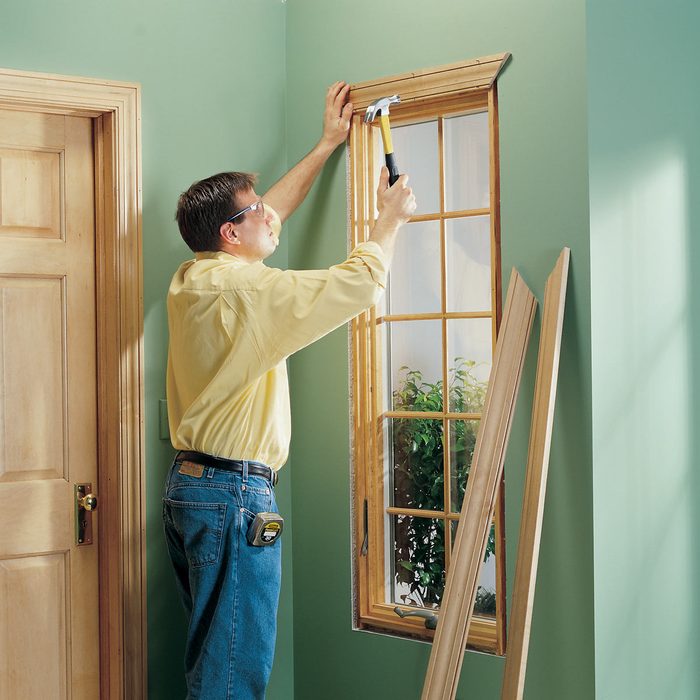Finding the right kind of trim is essential to completing any kind of remodeling project around the house. Familiarize yourself with all the available trim options.

The 15 Types of Trim You Need to Know for Your Next Remodel Project


Bare Wood
When you’re prepping for a trim project, the first thing you’ll have to decide is what types of trim you want to use. The most prevalent types of trim include bare wood, primed wood, medium-density fiberboard, polystyrene and PVC trim. You should use bare wood if you want to stain it or have a natural wood look. There is a wide range of wood types available, from poplar to pine to fir to oak to aspen.

Primed Wood

Medium-Density Fiberboard
Medium-density fiberboard (MDF) is a popular trim option because it’s typically the cheapest. However, it does have its own set of issues. MDF won’t perform as well in wet, humid areas. MDF is inexpensive and a great material for painted trim, but only if you’re installing it in a permanently dry place.
Installing MDF near the floor or near windows where water or condensation sometimes collects is a recipe for disaster. The MDF will soak up water like a sponge, expand and shed paint in very short order. So avoid using MDF anywhere it is at risk of getting wet.

Polystyrene
Polystyrene trim is made of rigid foam material and is a cheap, easy-to-work-with option for trim.

Polyurethane
Polyurethane trim is an option that won’t see much deterioration because of its build. It is typically ready to paint, cuts like wood, and is lighter than wood. Working with polyurethane trim is much like working with wood—you cut it with standard saw blades, nail it by hand or with a gun and paint it just like wood.
Home centers carry a small selection of polyurethane trim. You can find an endless variety of options online by searching for “polyurethane trim” (some products are listed as “urethane” rather than “polyurethane”).

PVC Trim
PVC azek trim is ideal for exterior trim options because it holds up against sunlight and keeps paint. It cuts almost like wood and is a good alternative in areas that take on water. PVC trim runs about the same price as knot-free wood. PVC trim is also emerging as an interior trim option.

Wood Composite
Wood composite trim is made of wood fibers, phenolic resins and wax. It can be cut like wood and often comes factory-primed. Wood composite trim is also another option for exterior trim that gives the appearance of wood trim. It’ll save you time and money in the long run since it holds paint better and longer than even the best-quality exterior wood.

Area Specific Trim: Casing
Casing refers to the trim used around interior or exterior windows and doors. The casing is designed to cover the unfinished gap between walls and door or window frames. It usually spans two or three inches.

Baseboards
Baseboards are trim placed on the bottom of walls where they join the floor. Baseboards, which are also called wall base molding, cover the joint between the wall and the floor and come in a variety of designs. From softwood to hardwood to vinyl, there’s a lot to wade through, and it’ll have to match the other trim in the house.

Crown Molding
Crown molding covers the corners between ceilings and walls. It comes in at a big angle and can be tricky to install. Crown molding, also known as cornice molding, is not necessarily needed in all instances, but it can add a decorative flair to a home.

Chair Rail
Chair rail was originally meant to protect walls from furniture damage, but these days, it can also be decorative. Chair rail is a great way to dress up the dining room or other rooms. It can also be used to break up wallpaper from paint or two different paint colors.

Picture Rail
A picture rail allows picture frames to hang from walls without having to nail holes in the wall. It can be a perfect addition to an older home and a great idea for homeowners who might not be able to hang pictures on their walls.

Wainscoting
Wainscoting is wood paneling against a wall often seen in foyers, staircases, master bathrooms and dining rooms. It’s similar to a chair rail, but there is a difference. Wainscoting is made up of panels that extend from the middle of a wall almost to the floor, while chair rail is just a horizontal rail in the middle of a wall.

Wall Frame Molding
Wall frame molding is made to look like a picture frame but is typically larger. It is found in Georgian and neoclassical homes and are typically in hallways, stairways, living rooms or dining rooms. The precise nature of working with this trim can make it a time-consuming venture.

Plate Rail
A plate rail is used as a platform to store a collection of items like jars or pottery and is another of the many types of trim options.




















